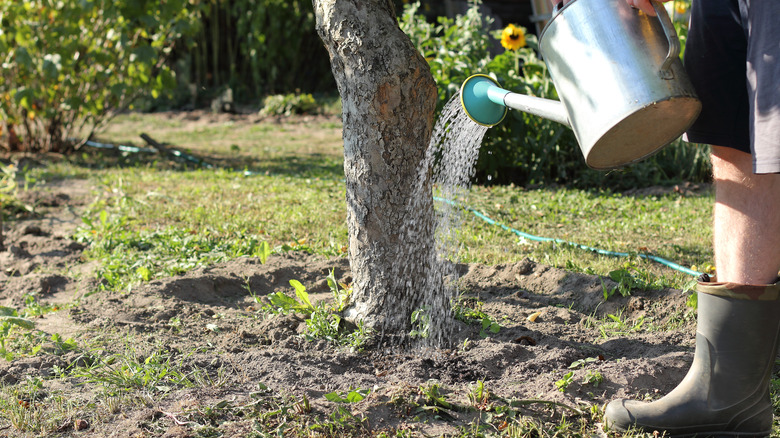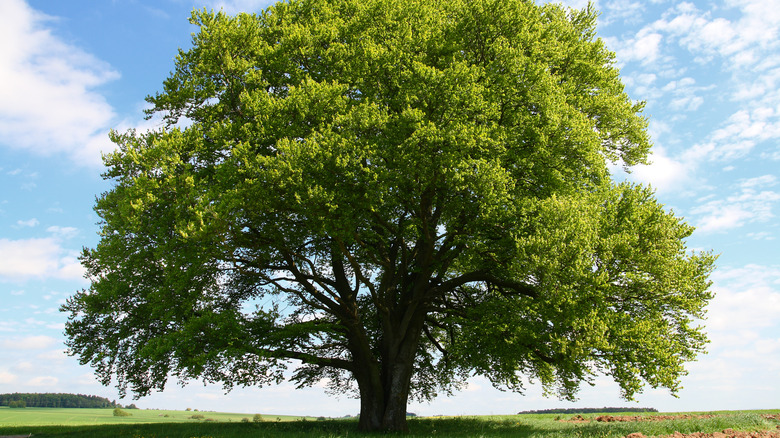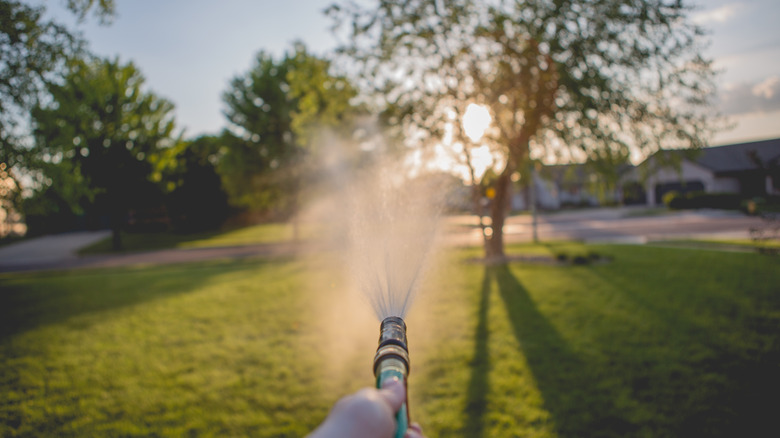What Is A Tree's Drip Line, And Why It Is Important In Landscaping?
Planting trees at home, no matter the species, is no simple feat. Whether you start the process with seeds or with a young sapling, figuring out what your infant tree needs as it inches toward maturity requires both practice and unwavering patience to master. Complete novices to the craft might pay little attention to the condition of roots underground when growing their trees and the complex processes of development trees undergo that are invisible to the human eye. However, those home gardeners with more experience are more inclined to consider such factors when planting, including this significant aspect of landscaping that greatly impacts root growth and the overall health and strength of the tree in question. The drip line of a tree is the imaginary line on the ground encircling the tree's trunk at precisely where its branches extend the farthest, intended to outline how far the tree's roots stretch under the soil.
Although drip lines are likely considered most when it's time for trees to be watered, this boundary is just as important to take into account when applying fertilizer and mulch to a tree's base as well. Following through with these procedures correctly can make all the difference when raising a tree from its earliest stages to adulthood, particularly during the first five years of its life. Continue reading to learn why drip lines are important when caring for trees and how to locate the drip lines surrounding the trees inside your own front or backyard.
Why drip lines are critical in landscaping
Understanding drip lines is necessary when growing trees because they directly impact the efficiency of three key elements needed to raise trees to full maturity: watering, fertilizing, and mulching. All trees call for a combination of some or all three of these elements to survive, with younger trees requiring more care and attention than their older counterparts due to their increased vulnerability to external forces. Without the proper amounts of water, fertilizer, and mulch, a tree has few chances to receive the nutrients and protection from the sun it needs to grow healthy and strong, often resulting in weakened roots that are more susceptible to disease and death.
Acknowledging a tree's drip line remains important even as it ages into adulthood since trees still need plenty of water in order to survive after fully maturing, especially during the chillier months of winter and fall. Most trees need deep, extensive root systems in order to grow their healthiest, which normally calls for deep, penetrative soakings both within and along the tree's drip line. And since roots tend to stretch as they search for nutrients underground, watering outside the tree's drip line will encourage roots to extend farther than simply watering within the confines of this invisible region. The size, length, and depth of a tree's roots also depend on its species and age, so be mindful of your specific tree's anatomy to know how to best care for it.
Using a tree's drip line when watering
Before you start watering your tree according to its drip line, you must know how to find the tree's drip line in the first place. To do so, first locate the outermost circle of branches, which is often the ring of limbs located closest to the ground. Next, use a long object to trace an imaginary line from the tip of one of those branches to the ground, marking the place where a raindrop would land if it fell off the bough. Do this around the tree's entire circumference and connect the markings to form a circle. You can also calculate the location of the drip line using a tape measure and a mathematical formula for a more precise estimate. The drip line should form a circular or ovular shape, depending on the tree's configuration. Understand that a tree's drip line will change over time as it grows since a tree's roots will need to grow longer and stronger underground to support any surges in width and height.
Once you've found the drip line, check the soil surrounding the tree to determine if its roots need watering. If the ground feels dry, grab a gardening hose or an irrigation tool offering similar pressure and thoroughly water from the trunk to a few feet beyond the marked drip line. However, avoid watering too close to the tree's trunk or watering the trunk directly, or you'll risk exposing the tree to wood rot.


